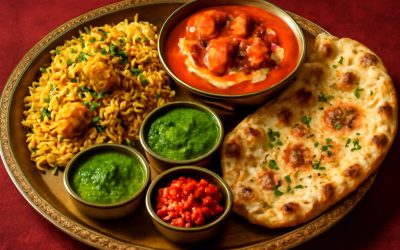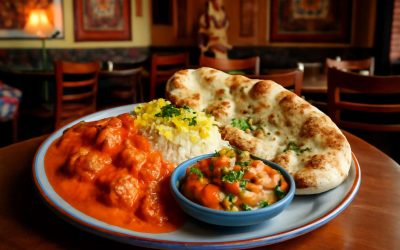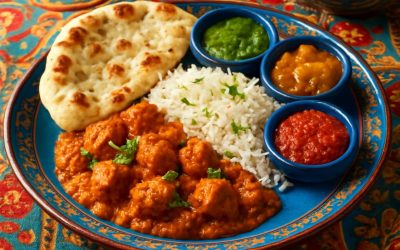
Indian cuisine is renowned for its sophisticated balance of flavors that create crave-able food. Vegetables, grains, pulses (lentils or beans), eggs and paneer (a fresh Indian cheese) play the largest role in a typical meal. Meat is used rarely and primarily in dishes that take advantage of the cooking technique of tandoori, in which meats are marinated and then cooked over high temperatures in a tandoor oven.
The country’s rich heritage and diverse geography have shaped Indian cuisine. The Mughals influenced palace cooking in the North, while in the tropical South coconut palms yield sweet milk, which is made into curries and drunk as toddy.
A central theme is the use of spices and herbs that add complex, savory flavor to many dishes. Some of the most commonly used include cinnamon (Cinnamomum zeylanica) with notes of nutmeg and vanilla; cardamom (Elettaria macrocarpa), with hints of pine or citrus and a cooling effect; saffron (crocus sativus), with its apricot, metallic honey and grass or hay flavor; and turmeric (Curcuma longa), which gives dishes an intense yellow color and provides anti-inflammatory properties.
Another important component of Indian food is the use of whole spices that are toasted or dried before using to add flavor and aroma. For example, whole-dried coriander (CORIANDRA) has a flavor often described as lemony or citrus; fresh cilantro is also used, though its pungency can be controversial; and asafoetida/hing (Asafoetida in the US) adds a nutty or earthy pungency that some people find similar to dish soap.
Typically, meals in India are eaten with the hands and not with utensils. This practice is thought to aid digestion, prevent overeating and provide a sensual pleasure of feeling the food in your hands. Many people also believe it is a good way to bond with family and friends while enjoying the food together.
In addition to a variety of vegetables and meats, Indian food also includes whole grains, lentils and rice and numerous kinds of bread. Roti, a unleavened flatbread that can be round or triangular, is often eaten for breakfast, while paratha, a flaky, whole wheat bread, can be stuffed with anything from potato to spinach and paneer (a soft Indian cheese). A crisp, deep-fried bread known as papadam – sometimes referred to as a chip or tortilla – is often served with Indian meals to help scoop up other foods.
Dishes labeled tandoori are meats or breads that are marinated and cooked over high temperatures in a tandoor (clay) oven. The most famous is tandoori chicken, but this is just one of the many dishes that fall into this category.
A distinctive feature of Indian cuisine is the omnipresence of pickles. Pickles of every conceivable fruit or vegetable are available and are consumed in large quantities with many Indian meals. Some Indians use nimbu ka sat (Citric Acid) in powder form, a common ingredient for homemade pickles, to add a little acidity when a condiment like vinegar is not readily available.



0 Comments